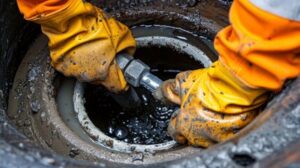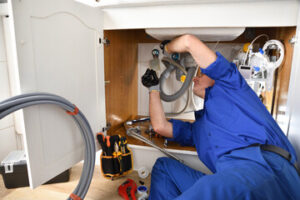Whether you produce liquid waste in a commercial or residential setting, proper disposal can prevent environmental damage and safety risks. This article will examine the various types of liquid waste and how to dispose of them responsibly.

Liquid waste includes wastewater, fats, oils, and grease (FOG), hazardous household liquids, and discarded commercial products. These substances must be disposed of according to strict guidelines. Contact Liquid Waste Disposal Perth for professional help.
The cost of liquid waste disposal can vary widely based on several factors, including the type of waste, volume and location. Hazardous waste typically costs more than non-hazardous waste, as it requires additional procedures and precautions. Additionally, larger containers generally incur higher transportation fees. However, there are ways to save money on liquid waste removal services. For example, many cities offer free hazardous waste disposal programs. You can also find professional junk removal companies that offer flat rates for dumping and pick-up.
Liquid waste is a serious environmental concern that can cause untold damage to the environment and human health if not disposed of properly. It is important to follow proper procedure when disposing of this waste, as failure to do so can result in fines and penalties.
To prevent the spread of harmful contaminants into waterways and groundwater aquifers, it is necessary to use liquid waste disposal techniques that are safe for the environment. These methods include incineration, deep-well injection and recycling and reuse. Biological processes, membrane filtration and reverse osmosis can convert liquid waste into useful products, reducing the demand for freshwater resources.
While a fee could encourage businesses to follow proper disposal practices, it must be high enough to make a difference and not so high that it drives illegal dumping. More than 30 states have some kind of state-level trash fees, which range from $0.50 to $13 per ton. These fees are usually imposed at major choke points for trash, like landfills, incinerators and transfer stations. Waste haulers and municipalities pass these fees on to local residents and businesses.
In Chadron, the city has a septic waste and carwash sludge fee. Public Works Superintendent Milo Rust says the city incurs separate costs for treating these different types of waste, and he suggests that a single fee would be fair.
Whether or not the charge should be increased will be up to local communities to decide, and they may need to take a variety of factors into consideration before making a decision. Depending on the size of the waste stream, local laws and environmental concerns, the cost of liquid waste disposal will differ from region to region.
Techniques
Liquid waste disposal is a complex process that requires careful handling to minimize hazardous effects on the environment and human health. It also needs to comply with local environmental regulations and guidelines. These regulations are enforced by a variety of regulatory establishments and are intended to protect public safety. Proper handling and treatment methods of liquid waste can help businesses save money on energy-intensive waste management procedures and reduce the risks associated with chemical spills.
There are many techniques for liquid waste disposal, including dewatering, sedimentation, composting, and incineration. Each of these methods has its own benefits and challenges. However, choosing the right technique for your facility will depend on your unique needs. For example, if your business generates large volumes of organic waste, composting may be an ideal option. This process converts the organic waste into nutrient-rich soil compost that helps enhance the growth of plants and crops.
The first step in a liquid waste disposal process involves segregating and classifying the waste based on its potential harm to the environment. This includes separating hazardous and non-hazardous waste. It is important to separate these wastes, because combining them can lead to dangerous leaks and accidents. Once the waste is separated, it must be stored in secure containers and transported to a liquid waste management facility for treatment.
For bulk liquid waste disposal, the best method is to use a wastewater treatment plant that specializes in treating such waste. These plants can also handle industrial and residential wastes. Moreover, they can provide other services such as dewatering and solidification, which are used for the safe disposal of toxic chemicals and hazardous wastes.
One of the most popular ways to dispose of liquid waste is by incineration. This process heats the waste to a high temperature and releases gases into the atmosphere, which can be recycled or reused. However, incineration can also cause air pollution and reduce the quality of the earth’s atmosphere. Moreover, it is expensive to build and operate incinerators. A better option is to recycle or reuse the byproducts of liquid waste treatment, such as dewatered sludge.
Regulations
Many laws and regulations govern the handling, transporting, treating, and disposing of liquid waste. It is important for companies to understand these requirements so that they can minimize their environmental footprint. For example, they must be careful not to contaminate the environment and avoid releasing hazardous substances into the air or water. They should also work with regulators to ensure that they are following all appropriate guidelines.
Liquid waste disposal is a crucial process that requires strict attention to detail. Improper disposal can lead to environmental damage and legal penalties. In addition, it can create a nuisance for residential neighbors, which may cause them to file complaints with the city. Fortunately, there are several ways to dispose of liquid waste safely and responsibly.
In general, most liquid waste is treated or disposed of in sewage treatment plants. The wastewater is then treated to a level that is safe for ecology and human health. However, there are other types of liquid waste that can be a threat to the environment if not disposed of properly. These include sanitary sewage and chemical waste. These pollutants can be harmful to the environment and human health. They can also cause water pollution by entering rivers and lakes.
Chemical waste disposal is usually done through a sanitary sewer drain. Unlike other wastes, it is never thrown into storm drains or in the trash. It is also not allowed in a public water supply system (PWS). Chemical waste is only permitted to be discharged from certain industrial facilities.
To be in compliance with EPA and New Jersey PWS Rules, companies should have a Best Management Practices Plan (BMPP). This plan will help them avoid or reduce the discharge of liquid waste to sanitary sewers. In addition, they should have a Corrective Action Program that addresses any known or likely releases of hazardous constituents from the facility.
Another way to treat liquid waste is by evaporating it. This method is used by industries that produce large volumes of low-toxicity waste. In this process, the liquid waste is placed in shallow basins and allowed to evaporate through natural processes. The residue left behind can be disposed of in landfills or incinerated.
Site selection
The site selection process for liquid waste disposal is a complicated and time-consuming endeavor. There are several factors that must be taken into consideration, including groundwater conditions and soil characteristics. It is also important to consider how the landfill will be accessed and used. In addition, the location of the landfill must be far enough away from surface water sources, which could contain contaminated runoff and jeopardize public health and safety. In addition, the site must be large enough to handle the volume of waste that will be produced.
Sanitary landfills are engineered sites that allow for the accumulation of liquid and solid waste. The waste is compacted in a way that minimizes volume and covered with soil or other material in a sanitary manner. The soil in which the waste is buried must be stable to ensure that the landfill does not leak and is not contaminated by runoff or leachate.
Most states regulate landfill construction and operation, and some have additional restrictions for site locations. These laws may include requirements for landfills to be constructed and operated in certain areas or within a specific distance from the nearest river, lake, or road (unless berms, fencing, or landscaping prevent visibility).
Various methods have been developed to identify landfill site locations, but these techniques have limitations. For example, they often fail to consider environmental factors and do not adequately consider trade-offs. These limitations can lead to the selection of sites that could negatively impact ecosystems and water quality. They also often do not take into account social and economic issues, which can result in community resistance, legal challenges, and conflicts.
The first step in the site selection process is to identify and map suitable landfill development areas. A GIS system is a useful tool for this purpose, as it provides spatial information on land use and other features. Detailed maps of the subsurface formations, and of surface and groundwater, are also needed for this purpose. Multiple-criteria decision-making (MCDM) methodologies, such as the Analytical Hierarchy Process, can help identify the best locations for landfill development.
